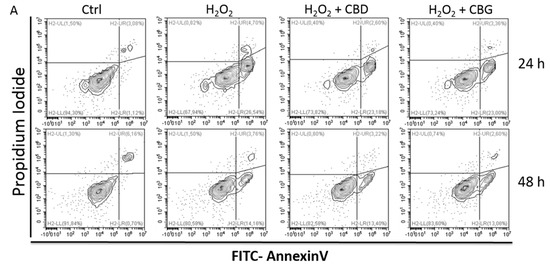 “Alcohol use disorders affect millions of people worldwide and there is growing evidence that excessive alcohol intake causes severe damage to the brain of both humans and animals.
“Alcohol use disorders affect millions of people worldwide and there is growing evidence that excessive alcohol intake causes severe damage to the brain of both humans and animals.
Numerous studies on chronic alcohol exposure in animal models have identified that many functional impairments are associated with the hippocampus, which is a structure exhibiting substantial vulnerability to alcohol exposure. However, the precise mechanisms that lead to structural and functional impairments of the hippocampus are poorly understood.
Herein, we report a novel cell death type, namely pyroptosis, which accounts for alcohol neurotoxicity in mice.
Conclusions: Alcohol induces hippocampal pyroptosis, which leads to neurotoxicity thereby indicating that pyroptosis may be an essential pathway involved in chronic alcohol-induced hippocampal neurotoxicity. Further, cannabinoid receptors are regulated during this process, which suggests promising therapeutic strategies against alcohol-induced neurotoxicity through pharmacologic inhibition of CB1R.”

 “Cannabidiol (CBD) and cannabigerol (CBG) are Cannabis sativa terpenophenols.
“Cannabidiol (CBD) and cannabigerol (CBG) are Cannabis sativa terpenophenols.
 “The antioxidant and CB2 receptor agonist properties of Δ9-tetrahydrocannabivarin (Δ9-THCV) afforded neuroprotection in experimental Parkinson’s disease (PD), whereas its CB1 receptor antagonist profile at doses lower than 5 mg/kg caused anti-hypokinetic effects.
“The antioxidant and CB2 receptor agonist properties of Δ9-tetrahydrocannabivarin (Δ9-THCV) afforded neuroprotection in experimental Parkinson’s disease (PD), whereas its CB1 receptor antagonist profile at doses lower than 5 mg/kg caused anti-hypokinetic effects. “Herein, 11 general types of natural cannabinoids from Cannabis sativa as well as 50 (-)-CBD analogues with therapeutic potential were described. The underlying molecular mechanisms of CBD as a therapeutic candidate for epilepsy and neurodegenerative diseases were comprehensively clarified. CBD indirectly acts as an endogenous cannabinoid receptor agonist to exert its neuroprotective effects. CBD also promotes neuroprotection through different signal transduction pathways mediated indirectly by cannabinoid receptors. Furthermore, CBD prevents the glycogen synthase kinase 3β (GSK-3β) hyperphosphorylation caused by Aβ and may be developed as a new therapeutic candidate for Alzheimer’s disease.”
“Herein, 11 general types of natural cannabinoids from Cannabis sativa as well as 50 (-)-CBD analogues with therapeutic potential were described. The underlying molecular mechanisms of CBD as a therapeutic candidate for epilepsy and neurodegenerative diseases were comprehensively clarified. CBD indirectly acts as an endogenous cannabinoid receptor agonist to exert its neuroprotective effects. CBD also promotes neuroprotection through different signal transduction pathways mediated indirectly by cannabinoid receptors. Furthermore, CBD prevents the glycogen synthase kinase 3β (GSK-3β) hyperphosphorylation caused by Aβ and may be developed as a new therapeutic candidate for Alzheimer’s disease.”
 “Neuropsychiatric disorders, such as addiction, are associated with cognitive impairment, including learning and memory deficits.
“Neuropsychiatric disorders, such as addiction, are associated with cognitive impairment, including learning and memory deficits. “Activation of
“Activation of  “Epilepsy is a neurological disorder characterized by the presence of seizures and neuropsychiatric comorbidities. Despite the number of antiepileptic drugs, one-third of patients did not have their seizures under control, leading to pharmacoresistance epilepsy.
“Epilepsy is a neurological disorder characterized by the presence of seizures and neuropsychiatric comorbidities. Despite the number of antiepileptic drugs, one-third of patients did not have their seizures under control, leading to pharmacoresistance epilepsy.
 “Alzheimer’s disease (AD), the leading cause of dementia in the elderly, is a neurodegenerative disorder marked by progressive impairment of cognitive ability. Patients with AD display neuropathological lesions including senile plaques, neurofibrillary tangles, and neuronal loss.
“Alzheimer’s disease (AD), the leading cause of dementia in the elderly, is a neurodegenerative disorder marked by progressive impairment of cognitive ability. Patients with AD display neuropathological lesions including senile plaques, neurofibrillary tangles, and neuronal loss. “Delayed neurologic sequelae (DNS) are among the most serious complications of carbon monoxide (CO) poisoning caused partly by elevated neuroinflammation.
“Delayed neurologic sequelae (DNS) are among the most serious complications of carbon monoxide (CO) poisoning caused partly by elevated neuroinflammation.